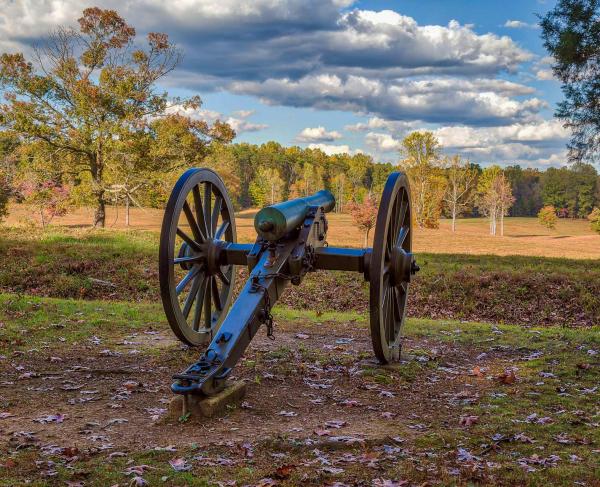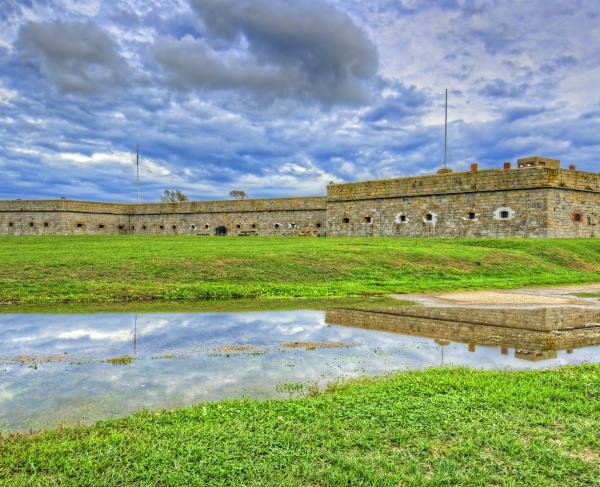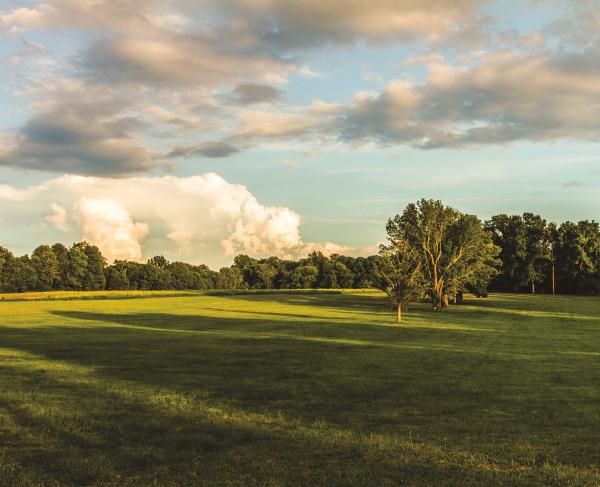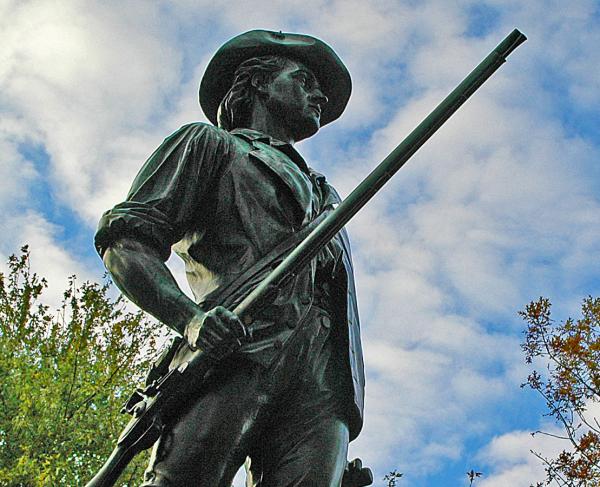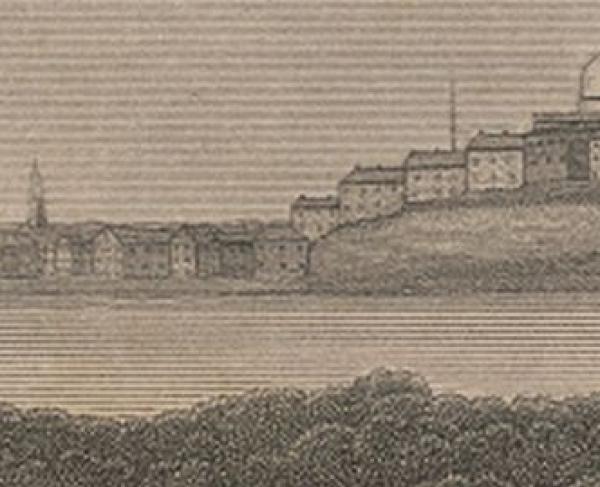Tour Revolutionary Boston in One Day

Founded in the 1630s by Puritan settlers from England, Boston, Massachusetts is one of the oldest cities in the United States, and has played an integral role in America’s history. Boston Harbor's location on the Atlantic Ocean made the city a key point in Colonial trade routes with the West Indies, which helped Boston grow into a center of commerce and a variety of crafts.
Today, visitors to Boston can tour the sites of the most important events in American history, including the site of the Boston Massacre, the Old South Meeting House, Faneuil Hall, Paul Revere's House, the Old North Church, and the site of the battle and Bunker Hill. The sites of the battles of Lexington and Concord are nearby, as well.
Itinerary
Stop #1: The Old State House and the site of the Boston Massacre
Time: 30 minutes – 1 hour
Details: http://www.bostonhistory.org/hours-and-admission/
Built in 1713 on the site of Boston’s Town House, the Old State House is one of the oldest public buildings in Boston. During the Colonial era, the Old State House served as the seat of the Royal Government in Boston, the meeting place of the Massachusetts Assembly, and the home of the Massachusetts Court system. Famous Patriots and members of the Massachusetts legislature, like James Otis, John Adams, and his cousin Samuel Adams, all took part in the debates and discussions that occurred in the Old State House. The Old State House was also the site of the Boston Massacre. In 1770, an angry mob confronted a unit of British Troops in front of the Old State House. The troops fired on the colonists in a panic, killing five rioters, and wounding several more. Though most of the troops were acquitted of murder charges, the Boston Massacre was one of the first major ruptures between Britain and the colonies.
What to do:
Start on the first floor.
- Pay the admission fee.
- Check to see if there are any special events, programs, or tours available on the day of your visit, including the daily special tour at 3:00pm.
- Tour the exhibits inside the Museum. The Old State House Museum hosts frequent lectures on a variety of historical topics. Plan your visit ahead of time to see if you can attend any talks or tours!
Don’t miss:
- The Council Chamber – This chamber, originally part of the Boston Town House, provided the meeting place for the Royal Governor and his council members.
- Revolutionary Artifacts – The Old State House has a fantastic collection of artifacts from the 17th and 18th centuries, including furniture, clothes, and manuscripts.
- The Old State House Balcony – This balcony was the platform from which officials read proclamations prior to the Revolutionary War, and thus bore witness to many historical events in the city, including the announcement and reading of the Declaration of Independence to the city in 1776. The Boston Massacre occurred directly beneath the balcony of the Old State House in 1770.
- The Boston Massacre Marker – The Boston Massacre of March 5, 1770 occurred in the square located beneath the Old State House balcony. Today, visitors can see a cobblestone marker commemorating this momentous event in the history of the American Revolution.
Insider Tip: Don’t miss America’s oldest restaurant. The Union Oyster House is just down the street from the Old State House and Faneuil Hall. The unique and massive restaurant is a must stop for any history or seafood lover.
Stop #2: Old South Meeting House
Time: 30 minutes – 1 hour
Details: http://www.oldsouthmeetinghouse.org/
The Old South Meeting House was one of the main sites of the debates and discussions that led to the American Revolution. Built as a Puritan Meeting House in 1729, the Old South Meeting Hall was one of the largest buildings in Colonial Boston. The Boston Tea Party was initiated after more than 5,000 colonists moved from the overcrowded assembly room at Faneuil Hall to the Old South Meeting House, where they decided to protest the Tea Act of 1773 by dumping tea from the East India Company into Boston Harbor on December 16, 1773.
What to do:
Enter the museum on the main floor.
- Pay the admission fee.
- Check for any special events, programs, or tours.
Don’t miss:
- The Voices of Protest Exhibit – This exhibit includes information on tea and the origins of America’s most famous protests, as well as a 3D model of Boston in the Colonial era.
- Revolutionary Artifacts – The Old South Meeting House is home to important artifacts from the Revolutionary era, including John Hancock’s writing desk, a first edition of African American author and poet Phillis Wheatley’s 1773 book, and more.
- Exhibit Scavenger Hunts – Admission to the Old South Meeting House includes access to a variety of scavenger hunts that can help add even more excitement to learning about this historic building’s past and the role it played in the events leading up to the American Revolution.
- Free Audio Program – Bring your smartphone with you so you can participate in a special audio program called “If these walls could speak,” that will help you listen to the debates about the Boston Tea Party that took place in the Old South Meeting House.
If you have time:
- Birthplace of Benjamin Franklin – The site at which Benjamin Franklin was born on January 17, 1706, is just across Milk Street from the Old South Meeting House, so if you have time, you can pop across the road to see it!
Insider tip: If you're looking for a bite to eat, Sam LaGrassa's is a local favorite with great sandwiches (they claim they're the World's No. 1, in fact!). It's only a few blocks away from the Old South Meeting House, and it's only open Monday-Friday from 11:00am-3:30pm, so be sure to catch it while you can!
Another Insider tip: Check the Old South Meeting House’s calendar of events ahead of time to see if you can attend any of their Public Events and Programs during your visit.
Stop #3: Boston Tea Party Ships and Museum
Time: 1-1.5 hours
Details: https://www.bostonteapartyship.com/museum
In May of 1773, the British Parliament passed the Tea Act to save the failing East India Company. In an effort to protest the Tea Act, Samuel Adams and the Sons of Liberty led colonists in an event that has become known as the Boston Tea Party. On the night of December 16, 1773, a group of colonists marched from the Old South Meeting House to Boston Harbor, where three ships carrying East India Company Tea were docked. Dressed as Native Americans, the mob boarded the ships and succeeded in throwing 342 chests of tea overboard. As a result, Parliament passed the Coercive Acts, called the Intolerable Acts by the Patriots, which effectively closed the ports in Boston Harbor in retribution for the actions. The Boston Tea Party was amongst some of the most important incidents that propelled the American colonies towards war with Great Britain. At the Boston Tea Party Ships and Museum, visitors can immerse themselves in the excitement of the night of December 16, 1773 by boarding reproductions of the tea ships, viewing artifacts from the event, and even throwing some tea into Boston Harbor.
What to do:
- Purchase tickets.
- Take the hour-long, fully immersive tour of the ships and museum with an 18th century guide.
Don’t Miss:
- The Eleanor and The Beaver – These two ships are authentically restored tea vessels from which you get to throw tea into the harbor as a part of the museum’s immersive experience.
- Museum Reenactment – You will get to meet reenactors portraying figures from the Boston Tea Party, as well as 3D hologram reenactors who help bring this historic event to life.
- Artifacts – In addition to the reenactment, you can view artifacts from the Boston Tea Party, including the Robinson Tea Chest, one of the only surviving remnants of the 1773 event.
- “Let It Begin Here” – This award-winning film teaches visitors about the events that brought about the American Revolution.
Insider tip: For a small discount, you can book your tickets online!
Stop #4: Faneuil Hall and Quincy Market
Time: 30 minutes – 1 hour
Details: https://www.nps.gov/bost/learn/historyculture/fh.htm
Built by Peter Faneuil in 1742 as a central marketplace for the growing town of Boston, Faneuil Hall has long been at the heart of America’s struggle for Independence. In addition to official town meetings, the assembly room on the second floor of Faneuil Hall hosted the meetings of concerned colonists, whose ideas about freedom would lay the groundwork for the American Revolution. Patriots and Sons of Liberty like Samuel Adams and James Otis gave speeches in Faneuil Hall to protest the Sugar Act, the Stamp Act, and other British legislation that they believed oppressed the colonists. Known as the “Cradle of Liberty,” Faneuil Hall was the center of some of the earliest discussions, debates, and protests about American rights.
What to do:
Start at the Faneuil Hall Visitor Center.
- Check to see if there are any Ranger talks while you are visiting.
- Explore the marketplace on the ground floor before heading upstairs to the meeting hall.
- Once you’re finished at Faneuil Hall, cross Dock Square to Quincy Market.
Don’t miss:
- The Great Hall – This upstairs assembly hall was an important center of discussion and debate about government and liberty in the American colonies.
- Historic Paintings – Be sure to see the portraits of George Washington and other Patriots that hang inside the meeting hall, as well as George P.A. Healy’s famous painting, Webster’s Reply to Hayne, which hangs at the center of the hall.
- Grasshopper Weathervane – When you’re in front of the hall, be sure to look up to the top of the structure to see the gilded Grasshopper weathervane that has rested on the building’s roof for more than 250 years.
- Quincy Market – Located just across Dock Square from Faneuil Hall, Quincy Market is one of three granite buildings that make up the Faneuil Hall Marketplace. The City of Boston offers free weekly tours of the historic marketplace, so be sure to check their website for more information.
If you have time:
- Visit the Ancient and Honorable Artillery Company Museum on Faneuil Hall’s 4th floor.
- There is also a statue commemorating Sam Adams behind Faneuil Hall, so be sure to take a look!
Insider tip: In addition to its history, Quincy Market is also a great stop for a variety of shopping and dining options! Check out this list of eateries in the Market for some suggestions. Regina Pizzeria is one local favorite, with another location (the original) in the North End!
Stop #5: Paul Revere House
Time: 30 minutes
Details: https://www.paulreverehouse.org/
Paul Revere was born in Boston on January 1, 1735. He was trained by his father as a silversmith and took over the family business sometime after his father's death in 1754. Though he was a successful silversmith and engraver, Revere is perhaps better known for the famed "Midnight Ride," in which he warned Boston and the surrounding areas that the British were on their way. Today, visitors can tour the house in which Revere lived with his family at the time of the Midnight Ride in April of 1775. Dating back to 1680, the structure was home to the Revere family from 1770 to 1780. The Paul Revere House is located along the Freedom Trail in Boston’s historic North End. One of the oldest and most densely populated residential districts in Boston, the North End is home to many historic sites that date back to the 17th and 18th centuries.
What to do:
Continue along the Freedom Trail from Faneuil Hall, and follow it to the Paul Revere House.
- Start your visit by checking in at the admissions booth to pay the entrance fee.
- Tour the House and its exhibits.
- Inquire about tours and any special events. Check out the House’s website for more information!
Insider tip: If you are looking for a sweet snack, Mike's Pastry is a North End classic that is beloved for its cannolis, cookies, and other excellent baked goods. It's located on Hanover Street, just one block off of the Freedom Trail and one block behind the Paul Revere House...which makes for a perfect stop before or after seeing the home of America's favorite Midnight Rider!
Stop #6: The Old North Church
Time: 30 minutes - 1 hour
Details: http://oldnorth.com/plan-a-visit/
The Old North Church, originally called Christ Church, was constructed in Boston’s North End in 1723 as an Anglican place of worship. On April 18, 1775, Robert Newman and John Pulling displayed two lanterns in the bell tower windows, signaling that the British were crossing the Charles River towards Lexington and Concord. Though the Old North Church would become linked to Paul Revere’s Midnight Ride and the beginning of the American Revolution, the parish itself included many loyalists.
What to do:
Continue along the Freedom Trail from the Paul Revere House to the Old North Church.
- Pay the admission fee or suggested donation.
- Check at the gift shop or guided kiosk about taking a guided tour.
Don't miss:
- Historic Pews – Inside the Old North Church, you can see the pews where prominent Bostonians sat during church services at the time of the Revolution.
- The Bell Ringing Chamber and Crypt – See the tower in which the famous “two if by sea” lanterns were hung to alert Bostonians of a British invasion, as well as artifacts in the Old North Church’s crypt. NOTE: To see these parts of the Old North Church, you must take one of the guided tours!
- Paul Revere Monument – Located just behind the Old North Church on the Paul Revere Mall is an equestrian statue commemorating Paul Revere’s Midnight Ride.
Stop #7: Copp’s Hill Burying Grounds
Time: 30 minutes
Details: https://www.boston.gov/cemetaries/copps-hill-burying-ground
Copp’s Hill Burying Ground is one of the oldest and largest colonial cemeteries, dating back to 1659. Named after Boston shoemaker William Copp, the cemetery was the final resting place more than 10,000 North End residents of the 17th and 18th centuries. During the Revolutionary War, the British Army utilized the hill for a battery during the Battle of Bunker Hill.
What to do:
Continue on the Freedom Trail from the Old North Church to Copp's Hill Burying Grounds.
Some of the cemetery’s noteworthy burials include Robert Newman, who helped position the signal lamps in the Old North Church, Edmund Hartt, who built the USS Constitution, and Prince Hall, a freedman who fought in the Revolutionary War and established the first Black Masonic Lodge. You can learn more about the cemetery’s history and plan your visit at this website.
Stop # 8: Bunker Hill
Time: 2 hours
Details: https://www.nps.gov/bost/learn/historyculture/bhm.htm
Bunker Hill marks the first major battle in the American Revolution. While British troops occupied the city of Boston, the American rebels positioned themselves across the Charles River on the summit of Bunker Hill, and prepared fortifications on nearby Breed’s Hill. British troops, commanded by Thomas Gage, advanced against their opponents’ position three times before the Americans ran out of ammunition, and the Redcoats were finally able to take the hill. It was during the Battle of Bunker Hill that the American Colonel, William Prescott allegedly instructed his men to “not fire until you see the whites of their eyes.” Though the British had won a tactical victory, they suffered 1,054 casualties, which was more than twice the number of American dead and wounded. The Americans retreated into nearby Cambridge, but continued to lay siege to Boston with new morale after their stand against the British at Bunker Hill. Today, visitors can walk on the grounds of the battle, view exhibits in the Bunker Hill Museum to learn more about the engagement, and view the Bunker Hill Monument.
What to do:
Start at the Bunker Hill Grounds.
- Visit the Bunker Hill Museum to learn more about the battle’s history.
- Check in at the Bunker Hill Lodge to see if the Bunker Hill Monument is open for climbing.
Don’t miss:
- Bunker Hill Museum Exhibits – The Bunker Hill Museum, located just across the street from the Bunker Hill Grounds, houses exhibits on the battle, the Charlestown neighborhood, and Bunker Hill’s memorialization.
- Bunker Hill Monument – Completed in 1842, the Bunker Hill Monument took the form of granite obelisk memorializing the early Revolutionary efforts at Bunker Hill. Visitors can climb to the top of the monument, which offers a great view of the city of Boston, located just across the Charles River to the South. Visit the Bunker Hill Lodge to inquire about making the climb to the top.
- Statue of Dr. Joseph Warren – A Son of Liberty and Patriot leader, Dr. Joseph Warren was commissioned as a major general in the Massachusetts militia shortly before the Battle of Bunker Hill, during which he was killed in combat.
If you have time:
- USS Constitution – First launched in 1797, this frigate was an early addition to the U.S. Navy and is one of the oldest commissioned warships in the world. The USS Constitution, also known as "Old Ironsides," saw action in the War of 1812. The USS Constitution has since been restored, and visitors can now board the ship in Boston Harbor, where it is currently docked.
Insider tip: If you missed Regina Pizzeria at Quincy Market, you have another chance to try it at its original location once you cross back over the Charles River into the North End!
Before you go:
- Print or download the Tour Map, or use our Tour Planner.
- Watch the Revolutionary War Animated Map.
- Watch our Boston Virtual Tour.
- Learn more about Lexington and Concord, the Battle of Bunker Hill, and the critical beginning of the American Revolution with the Northern Campaign Animated Map.
Insider tip for planning: Explore the Freedom Trail while planning your trip to Boston. This 2.5 mile trail takes visitors on a walking tour of some of America’s most important Revolutionary-era sites. Several of this itinerary’s stops are located along the Freedom Trail, so we recommend taking this route between sites when you can to make the most of your experience in Boston!
Related Battles
19
79
93
300

